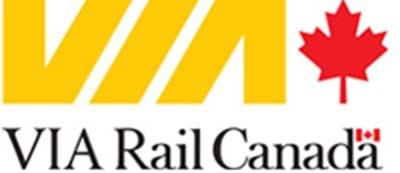Case study

Savings in train sets while increasing available seats
VIA Rail Canada Inc. (VIA Rail) is an independent Crown Corporation established in 1977. VIA Rail operates almost 500 trains weekly on 12,500 Km of track and serves 450 communities across Canada, from coast to coast, and north to Hudson Bay, covering 6 time zones. VIA Rail carries approximately 5 million passengers annually (2019), mainly in the Quebec - Ontario corridor, and employs around 3,115 people.
Operation:
- Railway network: 12,500 Km
- Rolling stock units: 73 locomotives and 428 train cars
- Number of stations: 121
- Number of trains / day (Monday to Friday peak hours): 100

-

10 000 000 CAD
in SAVINGS -

3% - 5%
increase in REVENUE -

3% - 4%
increase in AVAILABLE SEATS
-
The Challenge
VIA Rail had the strategic goal to decrease operation costs and increase the frequency and seat availability to passengers. Hence, the company ambitioned a system that could support, automate, and optimise business processes associated with the following business areas:
- Train Schedule - Optimise the timetable based on business strategy, market research, forecasted demand, and rail availability, and run ‘what-if’ scenarios for different fleet utilization options.
- Fleet Management - Optimise vehicle rosters to maximise revenue potential while minimizing operational costs and maintaining operational agility.
- Day-to-day operations - Execute the vehicle rosters while responding to unplanned events and reducing impacts on vehicles’ utilization and service level plans, and coordinate changes with the maintenance centres.
Due to the lengthy network operated by VIA, the development of this system presented several challenges for the optimisation of resources:
- Maintenance costs were very high due to a network with few maintenance centres
- Positioning trips (empty trains) represented a very high non-profitable cost
- Train trips with duration up to five days
-
The Solution
SISCOG answered Via Rail´s challenges with the development of NPO - Network Planning and Operations System, based on its integrated products ONTIME and FLEET. Involving all of these products’ modules, the system covers timetable and vehicle scheduling and management over the entire network, including all time horizons, from strategical, tactical, and operational scheduling, to dispatching and recovery from disruptions, supplying KPIs and reports for post-operation analysis.
With SISCOG’s support and NPO, VIA evolved from manual scheduling and dispatching to a state-of-the-art system enabling the combination of manual and automated operations with the resort to powerful optimisers, including also a Semi-Automatic mode that enhanced the use of the system.
The project was developed using an agile approach and included initial consultancy services related with change of working methods and user roles, which took form as defined workflows of information and documentation, as well as all the necessary alerts for, and authorizations from, the various stakeholders.
Three entities within VIA Rail use the NPO for their daily work: the Network Planning team, the Operational Control Centre and the Maintenance department.
-
The Benefits
- Decrease of 1 train set, representing savings of around 10M CAD, while at the same time increasing overall available seats
- Increase of 3% to 4% in Available Seats per Mile (ASM)
- Increase of 3% to 5% in revenue
- Significant reduction of Cost per Available Seats per Mile (CASM)
- Reduction in operating losses, through the analysis of multiple KPIs available in the system
- Better scheduling decisions due to the capability to build “what if” scenarios
- Capability to create vehicle rosters with the right capacity on the right transportation services
-
Michael Acosta, Director, Commercial Planning
For scheduling experts, what SISCOG offers is something special.
-
Optimisers’ performance surprised schedulers leading to a motivating
“Trust the optimizer!” wall message.


